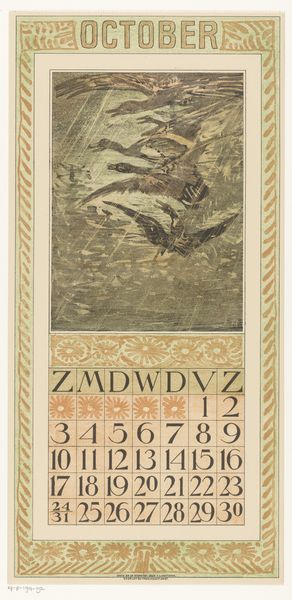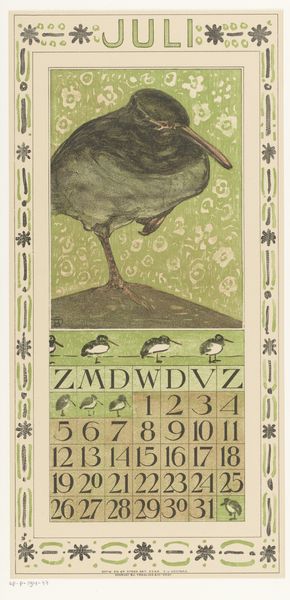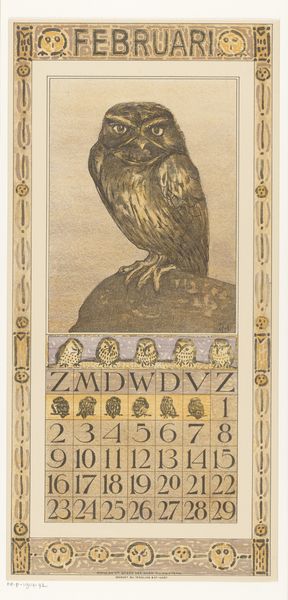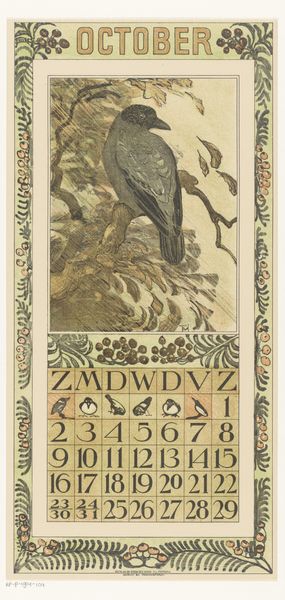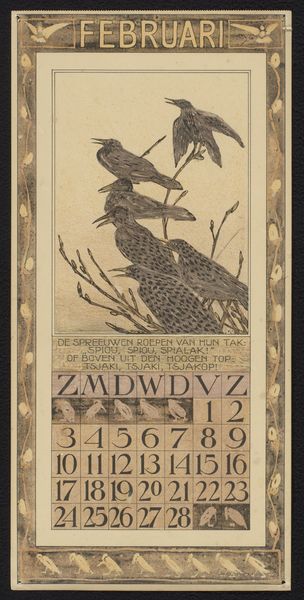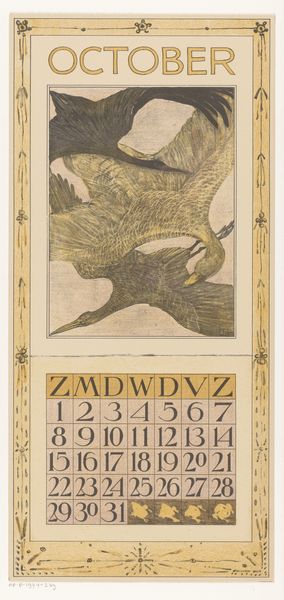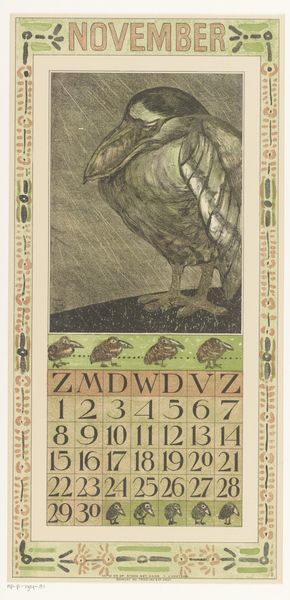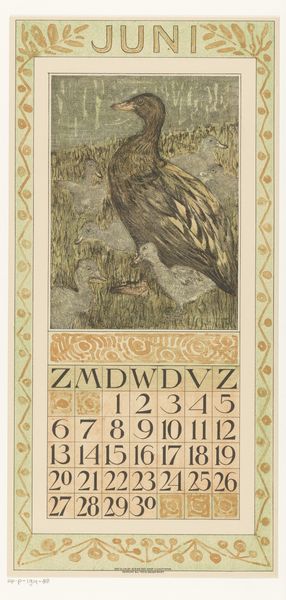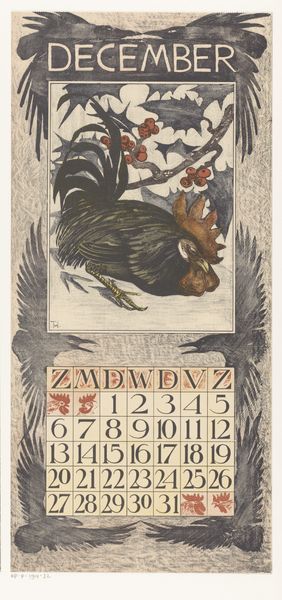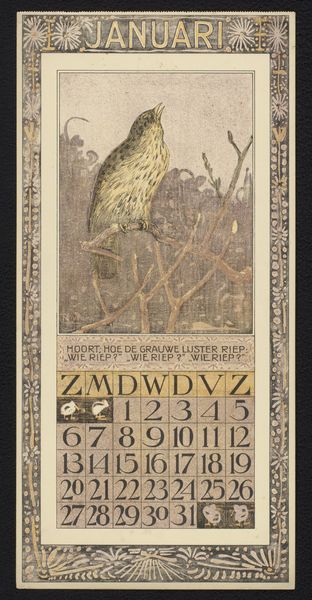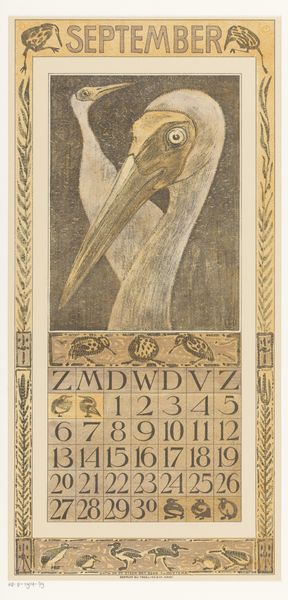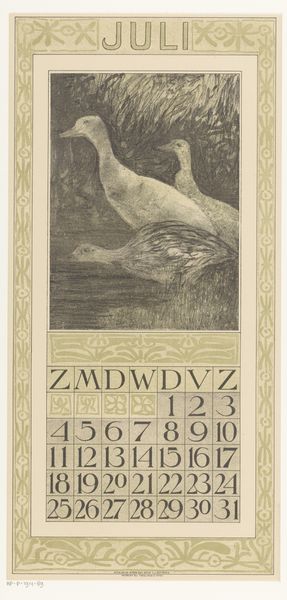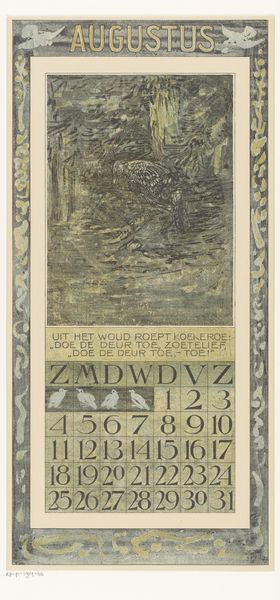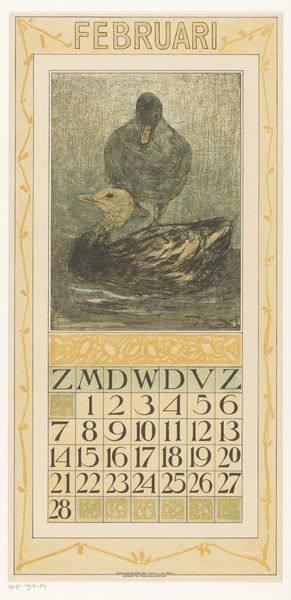
print, watercolor
#
art-nouveau
# print
#
landscape
#
watercolor
#
organic pattern
#
watercolour illustration
Dimensions: height 440 mm, width 210 mm
Copyright: Rijks Museum: Open Domain
Editor: This is "Kalenderblad augustus met kalkoen," or Calendar Page August with Turkey, created in 1907 by Theo van Hoytema. It's a print using watercolor, and is clearly inspired by art nouveau. What immediately strikes me is the blend of the functional calendar with the whimsical, almost imposing image of the turkey. How do you interpret this work? Curator: Well, firstly, notice how the turkey almost completely obscures the backdrop. This tension, between the overtly symbolic, powerful bird and the pale background, suggests a transformation of the mundane—a calendar—into something evocative. The turkey itself, in many cultures, represents abundance, harvest, and even a certain pride or vanity. Editor: I see that, it is pretty puffed up! What does that say about the month of August itself, or perhaps about the era? Curator: Consider the time. 1907. Art Nouveau was embracing organic forms and nature. Hoytema's choice to represent August, traditionally a month of plenty, with such a loaded symbol speaks to cultural anxieties about industrialization. He grounds this fear of losing the beauty of nature by embedding this grand symbol within a design for a functional object: a calendar. It may be a warning as well as a celebration. Editor: So, the turkey isn't just a turkey, but a symbol laden with meaning that adds layers to something as simple as a calendar? Curator: Exactly. Even the decorative border, the repeated floral motif, reinforces the artificial attempt to domesticate and contain the wilder symbolism of the central image, as the organic gets codified. What do you think? Editor: I didn't realize how much cultural memory could be embedded in what I thought was just a pretty calendar. It makes me want to look at everyday images with much more curiosity. Curator: Indeed, every image is a vessel, carrying meanings across time and cultures. This calendar reminds us that the most ordinary things can be imbued with extraordinary symbolism.
Comments
No comments
Be the first to comment and join the conversation on the ultimate creative platform.
